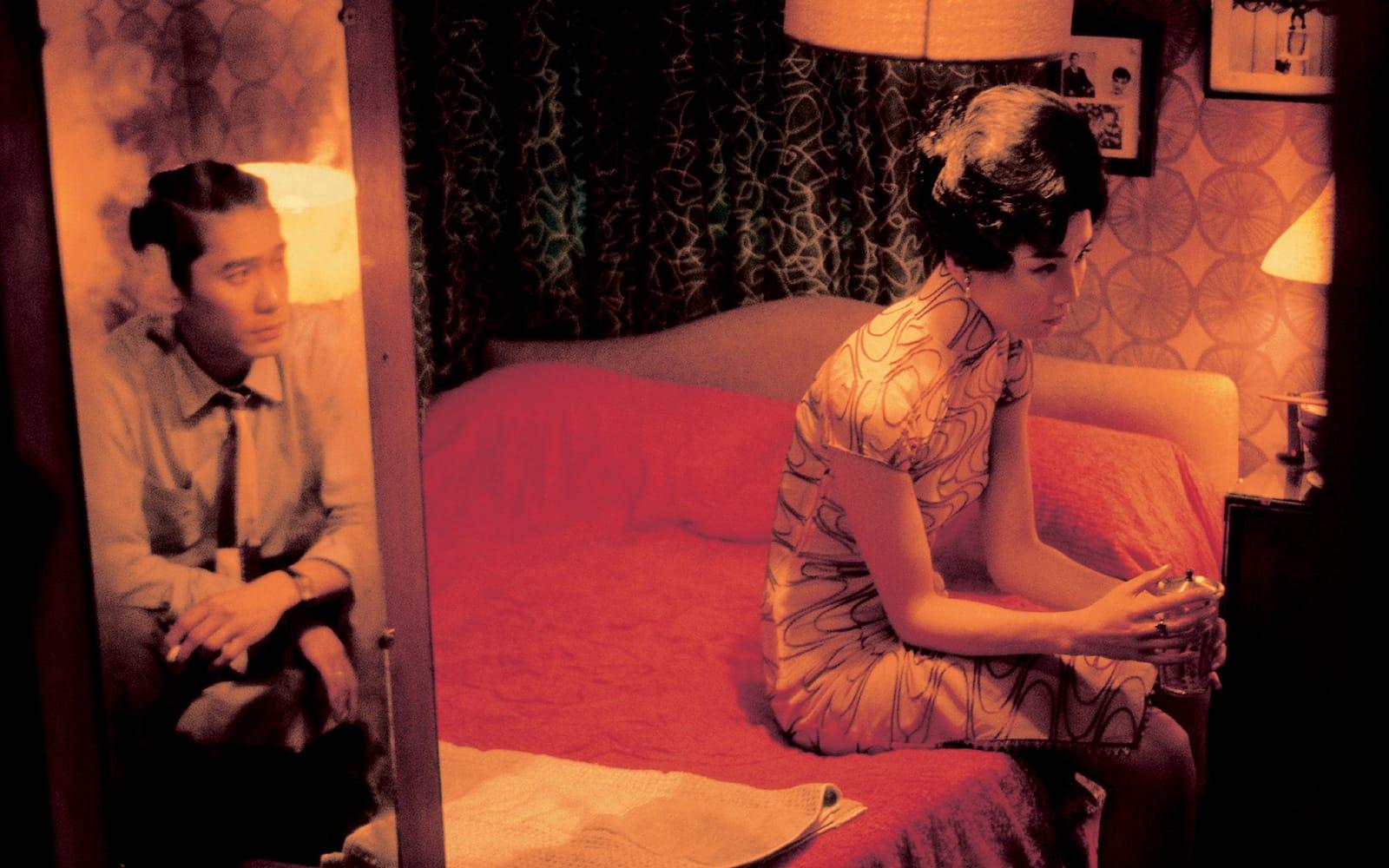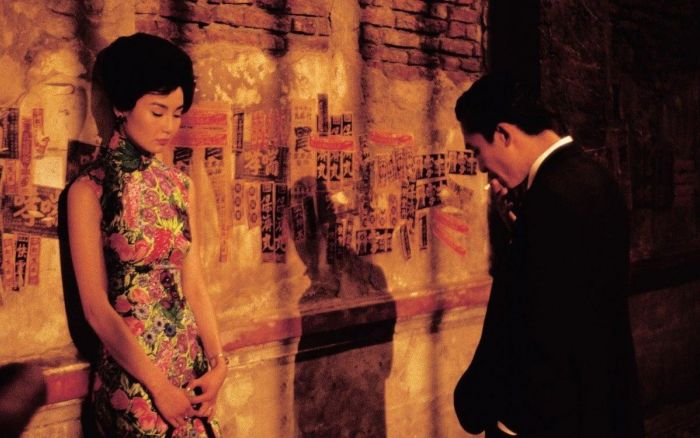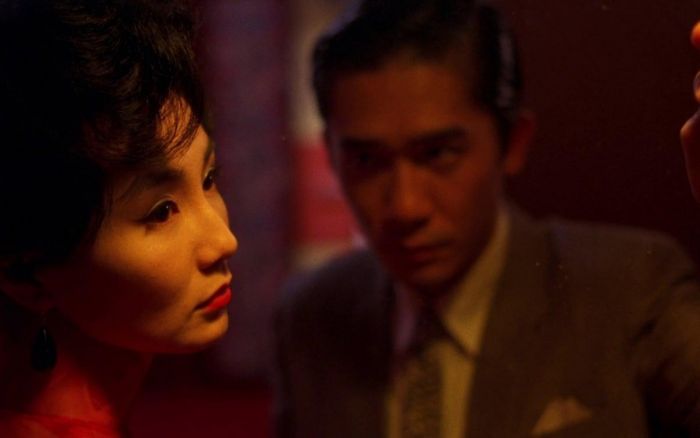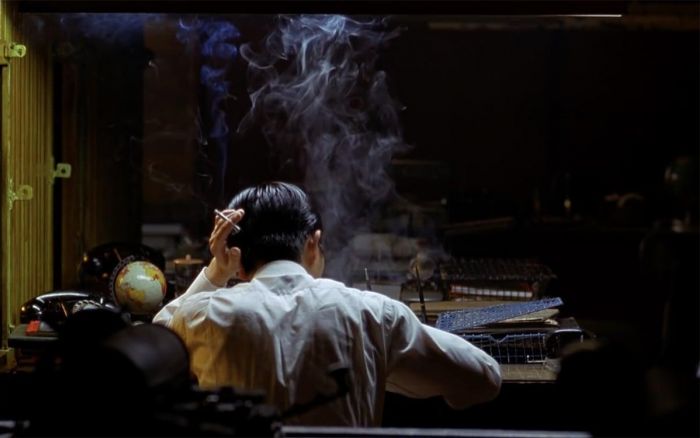20 Years of In the Mood for Love

20 years ago today, Wong Kar-Wai’s In the Mood for Love made its debut in Hong Kong theaters. Arguably the acclaimed director’s masterpiece, it’s a ravishing and gorgeous depiction of heartbreak and unconsummated love (read my review from 2001).
Set in 1962 Hong Kong, the film introduces us to Chow (Tony Leung) and Su (Maggie Cheung), two neighbors who strike up a cordial friendship as they pass each other on the streets and stairwells. That friendship takes a turn, however, when they discover their spouses are having an affair with each other.
Unable to confide in anyone else about their confusion and heartbreak, the pair find solace in each other’s company and eventually fall in love. However, they’re reluctant to give in to their feelings for two reasons: society would frown on it, and more importantly, doing so would make them guilty of the same shameful behavior as their adulterous spouses.

Of course, such a cinematic relationship is doomed, but In the Mood for Love is far from a big, loud, melodramatic picture. It’s refined and almost stifling in its sense of restraint.
Instead, the film finds emotional release in the tiniest and seemingly most insignificant details, be it cigarette smoke slowly swirling in the air, a pensive glance captured in a mirror’s reflection, a chance encounter while getting dinner, or any number of awkward silences. Such moments — often captured in exquisite slow motion — are all the more powerful and poignant thanks to Leung and Cheung’s restrained performances, right up to the bitter end.
Visually, In the Mood for Love is a feast for the eyes thanks to cinematographers Christopher Doyle (who left part way through the film’s production) and Mark Lee Ping Bin. Movies are rarely as luxurious as In the Mood for Love, and its rich, sumptuous palette is yet another way the film gives voice to the pair’s repressed desire and longing. (I’d also be remiss if I didn’t mention the film’s incredible wardrobe, from Leung’s snappy suits to Cheung’s ornate cheongsam dresses. And don’t even get me started on its soundtrack.)

Wong Kar-Wai took 15 months to shoot In the Mood for Love, due to his notorious approach to filmmaking. He doesn’t use scripts or storyboards for his films, nor does he allow his actors to rehearse. Instead, he begins with a basic outline and then “discovers” a film’s story by encouraging improvisation, shooting lots of footage, and basically figuring it out as he goes along. Or, as Doyle described it, “we would work on a scene and then find it wasn’t going the right way, so either rework it, or change the roles around, or put it aside to do in a different location on another day.”
Not surprisingly, this intuitive, improvisational process means that Wong’s films often go over budget and schedule (and are stressful experiences for his cast and crew).
In the case of In the Mood for Love, Wong shot over 30 times the amount of footage that ended up in the final film, and he didn’t finish editing In the Mood for Love until the morning before it premiered at the 2000 Cannes Film Festival, where it won the Technical Grand Prize and a “Best Actor” award for Leung’s performance.

In the Mood for Love would go on to receive numerous awards, including both “Best Actor” and “Best Actress” at the 2001 Hong Kong Film Awards, “Best Director” at the 2001 Hong Kong Film Critics Society Awards, “Best Foreign Film” at the 2001 César Awards, and “Best Foreign Language Film” and “Best Cinematography” at the 2001 New York Film Critics Circle Awards.
Furthermore, its status has continued to grow in the ensuing years. The Guardian ranked it as the 21st century’s fifth best film, calling it “gorgeously detailed” and “drenched in sensuality,” while it was ranked #2 in the BBC’s “100 Greatest Films of the 21st Century” list.
As you can see, I’m far from the only one singing the film’s praises at this point. So, in honor of the film’s 20th anniversary, I’ve put together some links to other people’s celebrations and memories of this gorgeous, singular film.
Mohamad Khalil Harb, “The Unwavering Beauty of In the Mood for Love”:
While In the Mood for Love is riddled with nostalgia — a theme that stretches across Wong’s filmography — it does not solely create an idealized reality. With the film’s highly impressionistic reconstruction of Hong Kong, it is easy to get lost in the beauty of its cinematography. However, in between its picturesque pangs of desire, are signifiers of Hong Kong’s capitalist economy and political landscape. Whether it is the ungodly small rooms Li-zhen and Mo-wan inhabit in their apartment complexes or the Siemens clocks that signify a corporate bureaucratic lifestyle, the grueling economy of Hong Kong sits constantly in the backdrop.
Kristin M. Jones, “Its elliptical story and lush visuals remain intoxicating”:
The film tantalizingly withholds information as it seduces with its sensuous cinematography by Christopher Doyle and Mark Lee and costumes, production design and editing by William Chang. It’s hard to imagine “In the Mood for Love” without Mrs. Chan’s array of striking cheongsams, which mark the passage of time and, in their variety and beauty, suggest depths of unspoken emotion. In a hotel where she and Mr. Chow meet, red drapes lining a hallway are as mysterious as the blowing white curtains in the enchanted castle in Jean Cocteau’s 1946 film “Beauty and the Beast.”
Moira Macdonald, “Why you should watch the gorgeous ‘In the Mood for Love’ ”:
When “In the Mood for Love” first came out, after much acclaim at the 2000 Cannes Film Festival, I remember seeing it several times in theaters, dazzled; it’s the sort of movie that inspires obsession, like a mystery you’re trying to solve. But I hadn’t watched it again, in all those years. Now, as it celebrates its 20th anniversary at a time when seeing a movie on the big screen is something at least temporarily lost, it seemed right to slip back under its spell.
Janelle Okwodu, “20 Years On, In the Mood for Love Remains the Ultimate Fashion Romance”:
In a lesser movie, the romance would be revealed via a grand overture. Kar Wai and William Chang, who did double duty as the costume and production designer, relied on subtlety. The growing intimacy between the leads reflects in their clothes, and the sets that complement them, layers of visual cues that give the audience something to unpack. Granted, Cheng and Leung could generate heat in sweatpants, but their costumes are endlessly stylish. At once a period-accurate depiction of the fashions and textile trends prevalent in Hong Kong during the 1960s and a forward-thinking analysis of couples style, the clothes are half the fun.
Prathyush Parasuraman, “This film too is a thing of lush, atmospheric beauty”:
This film is notorious for its framing. Often you see the characters through a frame, either a window, or fixtures. It gives a sense of you being not just a viewer, but a voyeur. This is a conservative society and Mrs. Chan is chastised by her land-lady about being more responsible in her youth. You constantly feel that the couple is being watched. It lends tension to an already tense plot, just waiting to unravel with one statement.
Douglas Parkes, “In the Mood for Love is regarded by many as one of the greatest films of the 21st century so far”:
Wong believed In the Mood for Love would be a quick shoot compared to the larger scale 2046, which was now about to get under way too and was initially intended to be based on certain Western operas. The first scenes, shot in Hong Kong, proceeded smoothly enough but things changed when Wong and his crew travelled to Bangkok to scout locations for 2046.
In the Thai capital Wong was amazed to discovered sites that recalled the Hong Kong of his 1960s childhood — the kind long demolished in Hong Kong itself. Wong was inspired, and it was here that In the Mood for Love took on its recognisable form, the tone growing more pensive and lugubrious. The director called his lead actors to Bangkok and, thoughts of 2046 pushed aside, a raft of new material was shot.
Sheena Scott, “A poetic film creating a hypnotic atmosphere that suggests romantic longing and desire”:
In the Mood for Love is a mesmerizing film, with a beautiful soundtrack, in particular Shigeru Umebayashi’s “Yumeji’s theme” that will stay in your head hours, if not days, after having seen the film. The camera lingers on every gesture, every gaze, the two leading characters make. In the Mood for Love is a true cinematic feast, making running under the rain and walking down a set of stairs in slow motion the most beautiful cinematic shots you’ve ever seen.
To celebrate the film’s 20th anniversary, Wong Kar-Wai and the Criterion Collection spent five years restoring the film in 4K along with several other Wong films, including Chungking Express, Fallen Angels, and 2046. The 4K version of In the Mood for Love will be shown in limited theatrical screenings around the world, and I can only imagine how lush and vivid it’ll look in its restored glory.
